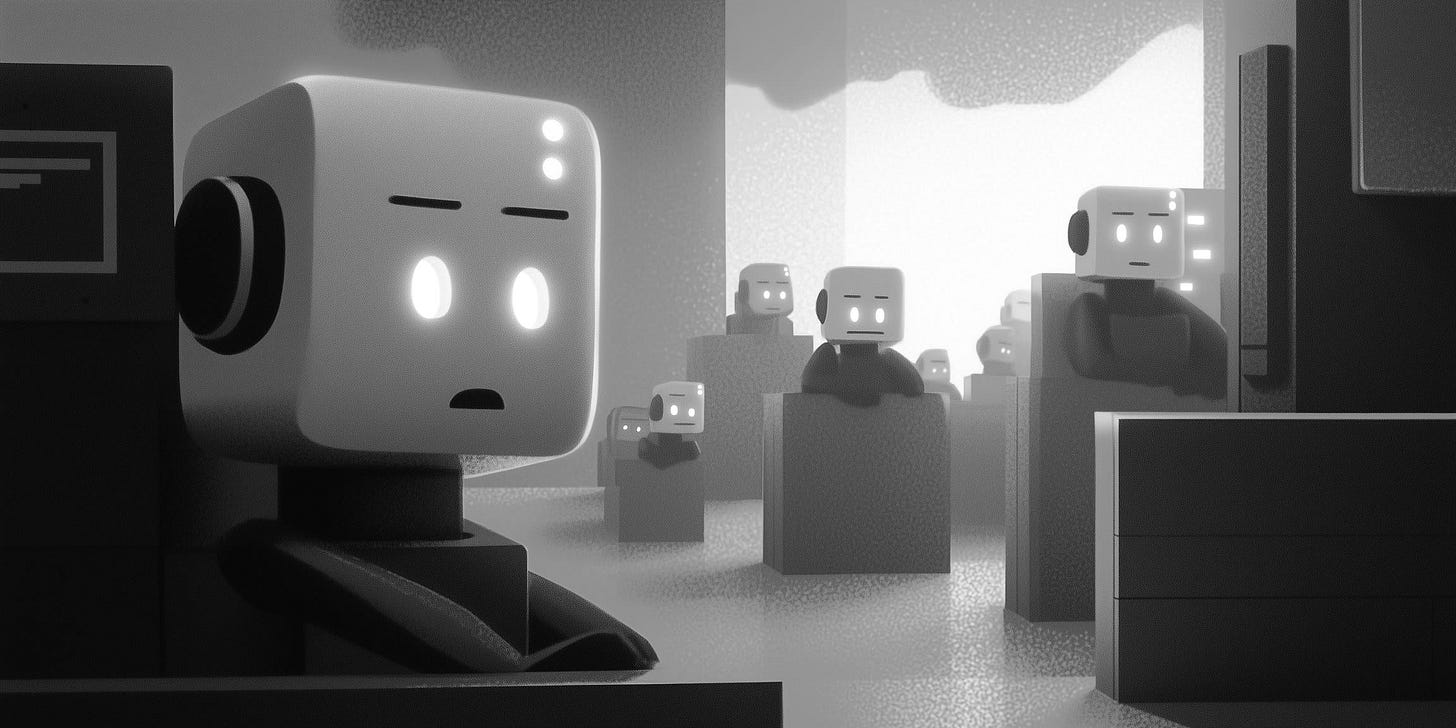Why Your AI Complaints Might Be Your Secret Weapon
What if I told you the very thing driving you crazy about AI could be your golden ticket to better content?
Look, I get it.
You're tired of seeing the same AI-generated garbage flooding your feeds. The identical LinkedIn posts, the cookie-cutter blog articles, the "content" that feels about as authentic as a plastic plant (and ugh, those “RIP, here’s 10 ways…” X threads 🤪)
And you know what? Your frustration is exactly why I'm writing to you today.
Because here's the thing that most people don't realize: those complaints you have about AI? They're not just valid – they're valuable.
I've spent years watching thousands of content creators struggle with this. They come to me frustrated, skeptical, sometimes even angry about how AI is "ruining" content creation. And you know what I tell them?
"The best way to complain is to make things better."
(Hat tip to Seth Godin for that gem of wisdom.)
See, when you're banging your head against the wall with another "AI writing assistant" that just regurgitates the same bland nonsense... that's not just frustration. That's your creative instinct screaming that there has to be a better way.
And you're right. There is.
From Frustration to Innovation
The secret? Stop letting AI write for you and start writing with it.
Think of it like this: Would you rather have an intern write your entire article while you cross your fingers and hope for the best, or a creative partner who bounces ideas back and forth with you, helping you shape your vision?
That's the difference between "done for you" and "done with you" AI content.
Let me share a real story that just happened last week (or was it two weeks ago?). A writer came to me, completely frustrated because she was trying to write a scene where her main character discovers an ancient artifact in a modern city. She'd tried using AI to generate the scene, but everything came out reading like a bad Indiana Jones knockoff (her words).
"I know what I don't want," she told me. "But I can't figure out how to make it work." (This is the classic conundrum with AI isn’t it?)
Instead of asking AI to write the scene, we took a different approach. We used it as a brainstorming partner, throwing questions back and forth: What if the artifact wasn't in some dusty corner but hidden in plain sight? What if it wasn't the discovery that mattered, but the realization of what it meant?
Twenty minutes later, she had something totally unexpected: her character finds the artifact in a thrift store, mistaking it for a cheap knockoff – until she notices something odd about how plants lean toward it, how static electricity seems to dance around it differently. The scene became less about the discovery and more about the character's growing awareness that her world isn't what she thought it was.
That scene would never have happened with a "write this for me" approach. It came from a back-and-forth dance between human creativity and AI's ability to ask "what if?" from angles we might not consider.
Making the Magic Happen
Here's how to recreate this in Chibi:
Start with your frustration: Create a memory field called “Creative Constraints” and then write down what's not working. Be specific. In our writer’s case: "Every scene feels like a cheap adventure movie knockoff. I need something that feels more grounded, more real." This becomes a creative boundary that pushes you toward something new.
Set up your creative partner: Create a new role called "Creative Challenger" with this simple instruction: "You're a creative partner who never directly solves problems. Instead, you ask probing questions that help the writer discover unexpected angles. Your questions should challenge assumptions and explore overlooked possibilities."
Start the conversation: Now open the Chat tool in Chibi and ask: "Based on my frustration in the Creative Constraints, what three unexpected questions could lead me to a fresh approach?" (Oh, and set the chat to use “context layer 3” so Chibi can “see” your document and memory)
Build on the unexpected Each answer becomes a new jumping-off point. When one intrigues you, use another like: "Let's explore that third question more deeply. What if we turned it upside down?"
The writer? She also turned this whole workflow into an action called "Frustration Breakthrough" that she now uses whenever she's stuck. One click, and she's got help leading her somewhere unexpected.
[Editor’s note: I turned this into a tutorial in our help center so you can recreate the (almost) same action for yourself)
Here's what makes this approach different: Each response builds on the last, but you're steering the ship. You're not asking AI to solve your problem – you're using it to illuminate paths you hadn't considered.
Collect Those Complaints
Those complaints of yours? They're your superpower. They're your quality detector, your authenticity radar, your "this could be so much better" intuition.
So the next time you find yourself rolling your eyes at another AI-generated article, remember: that frustration is showing you exactly what needs to be fixed. And maybe, just maybe, it's pointing you toward a whole new way of creating content.
What if you could turn those complaints into creativity?
If you're nodding along, thinking "finally, someone gets it," then stick around. We're just getting started with this conversation.
And please forward this to your friends, family, or anyone in your audience who would appreciate my message.
Thank you,
❤️+✌️, Chad
Today's Actionable Takeaway: Next time you spot an AI-generated piece of content that makes you cringe, don't just scroll past. Take a minute to identify specifically what bothers you about it. Is it the generic tone? The lack of personal insight? The missing emotional connection? Write it down. You've just created your personal checklist for what truly matters in authentic content creation.



Thanks for this... this is brilliant.